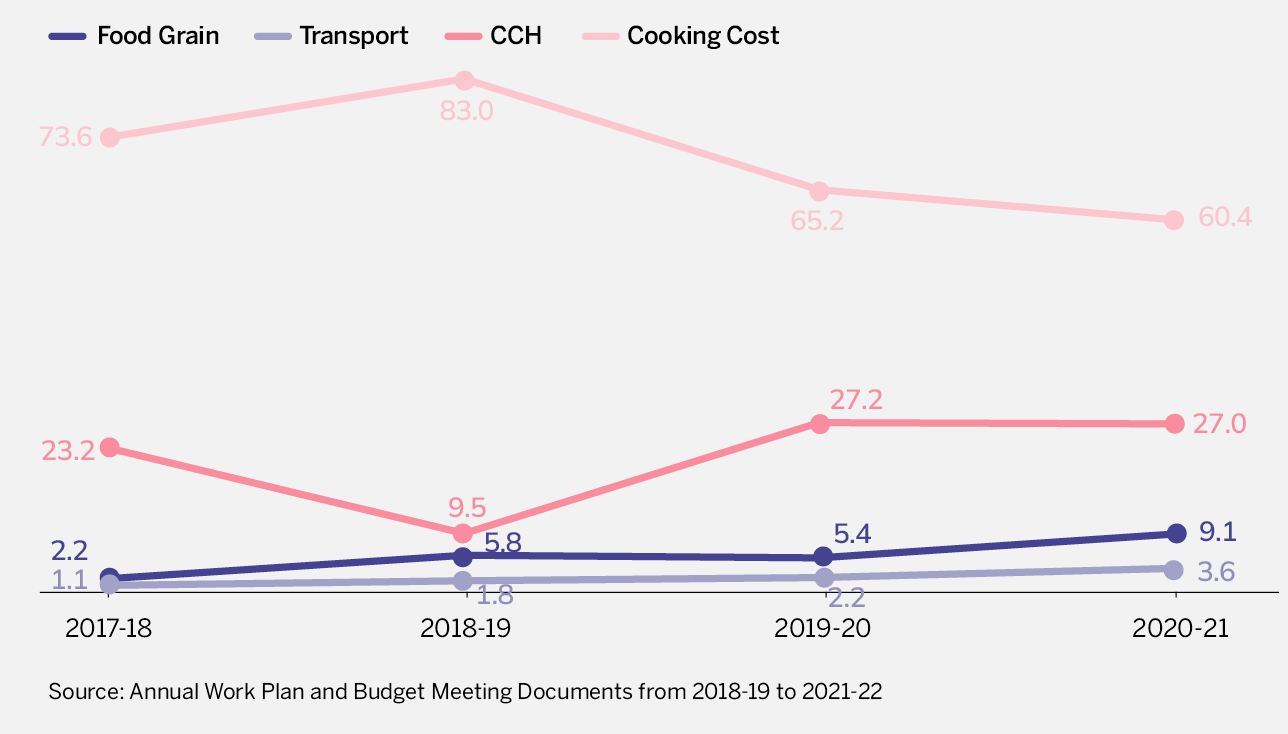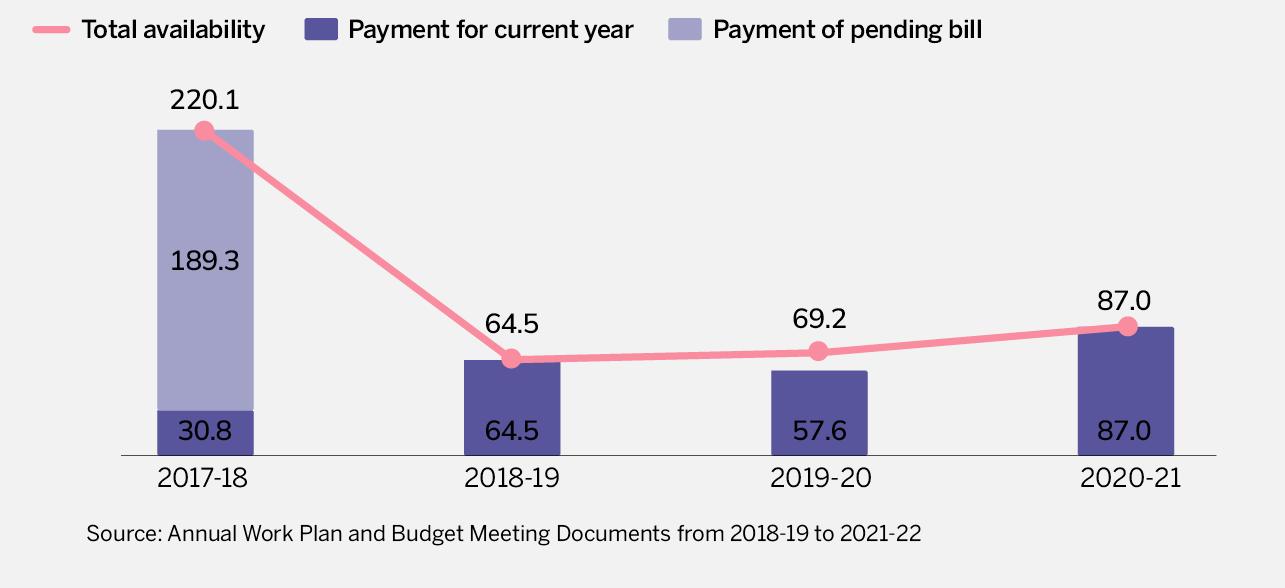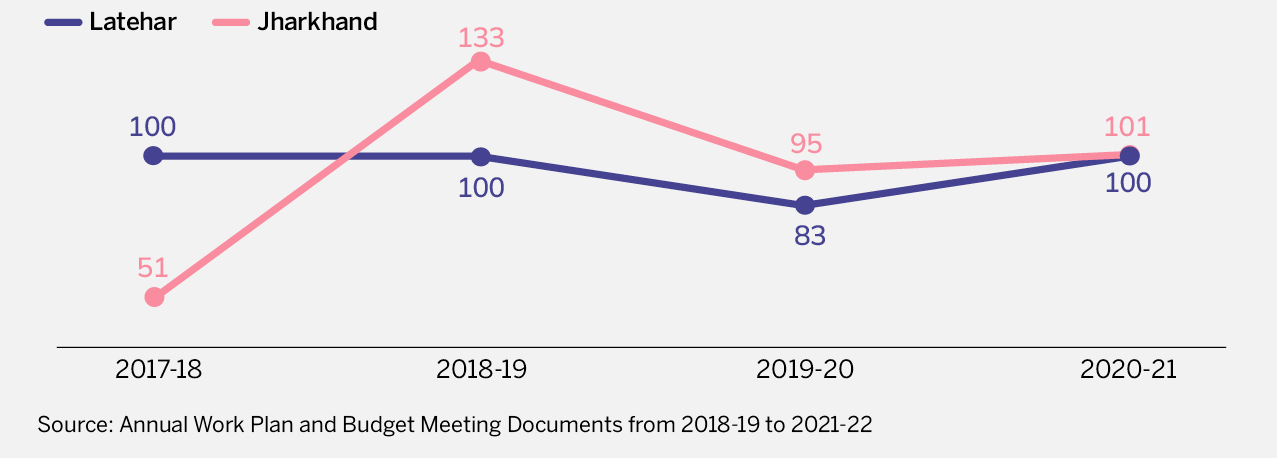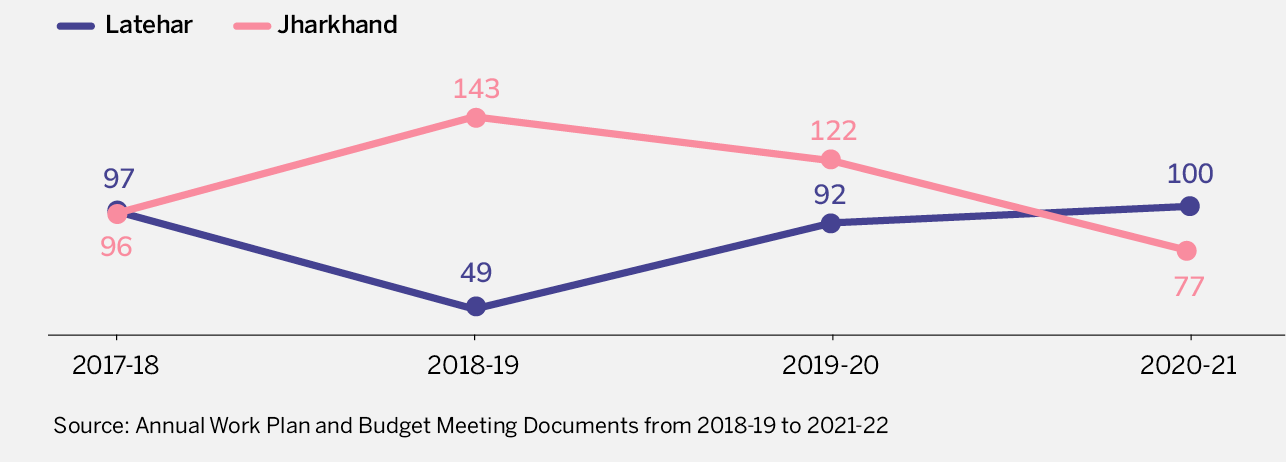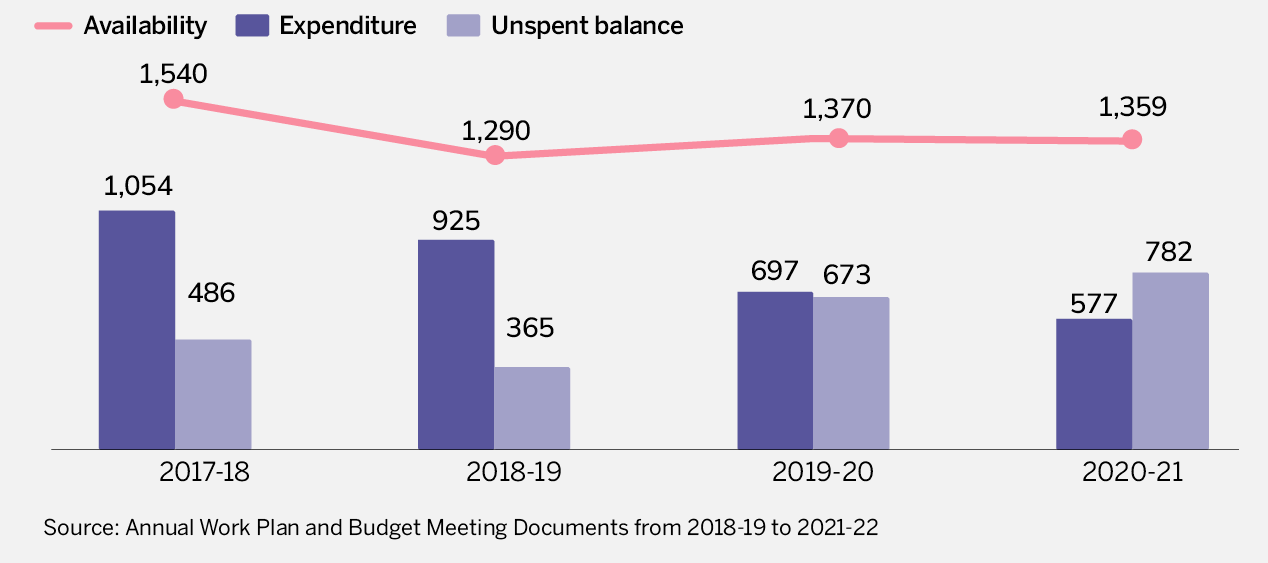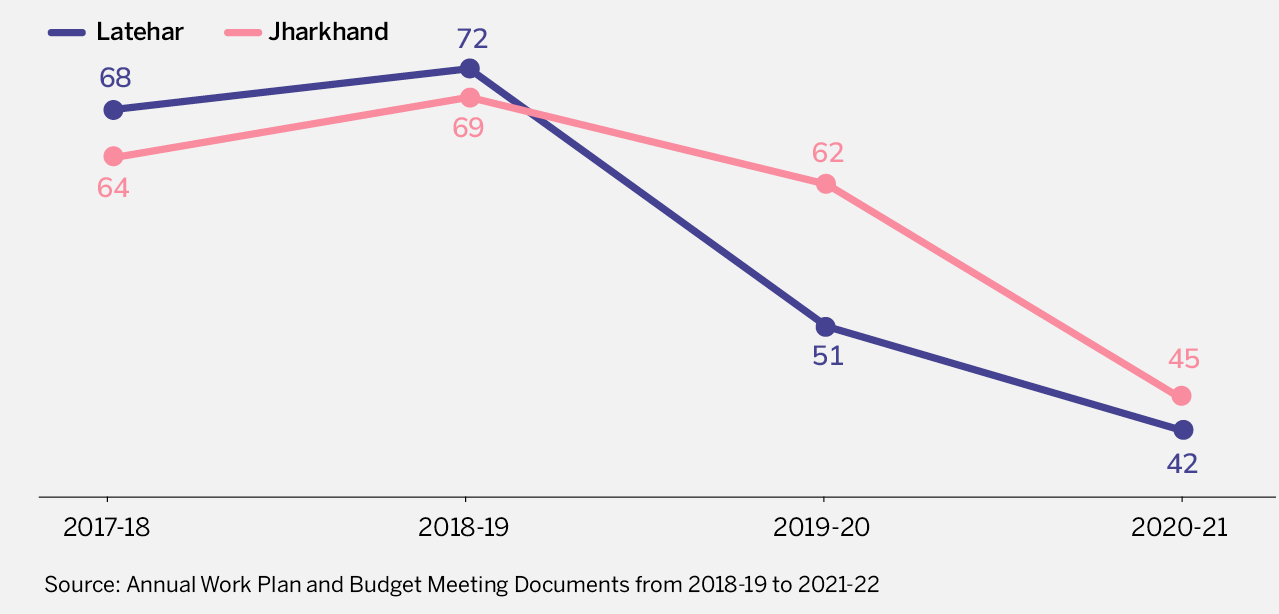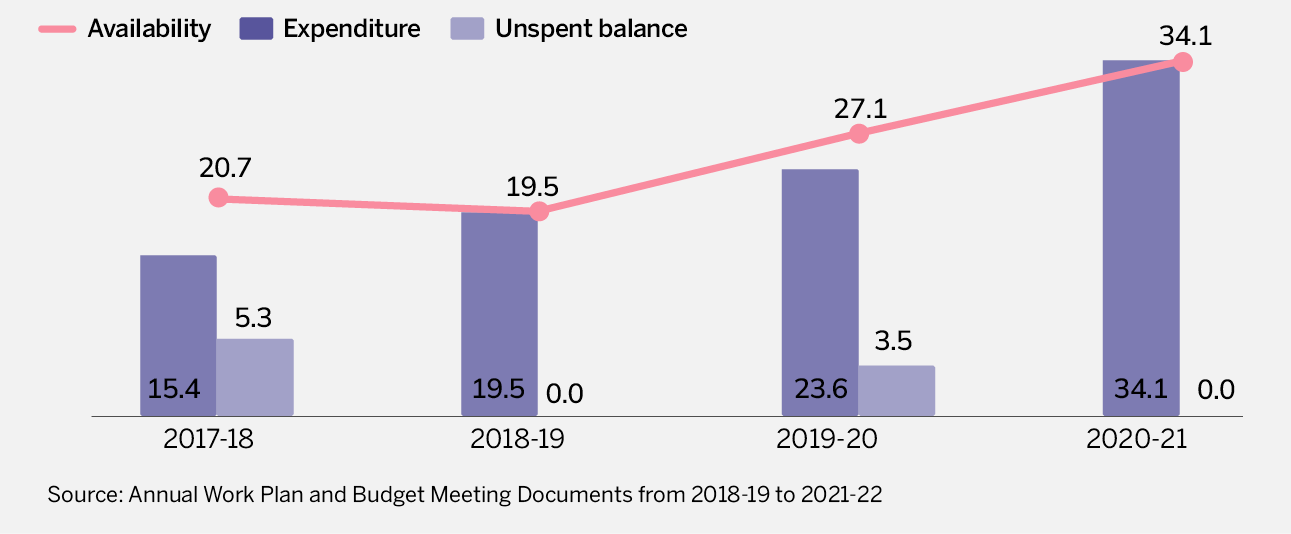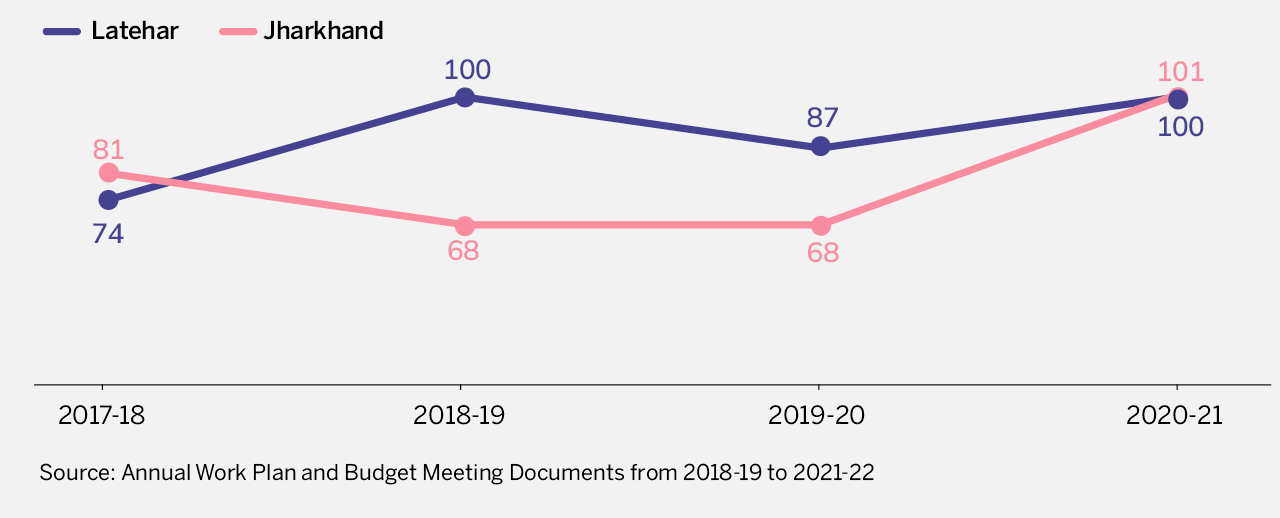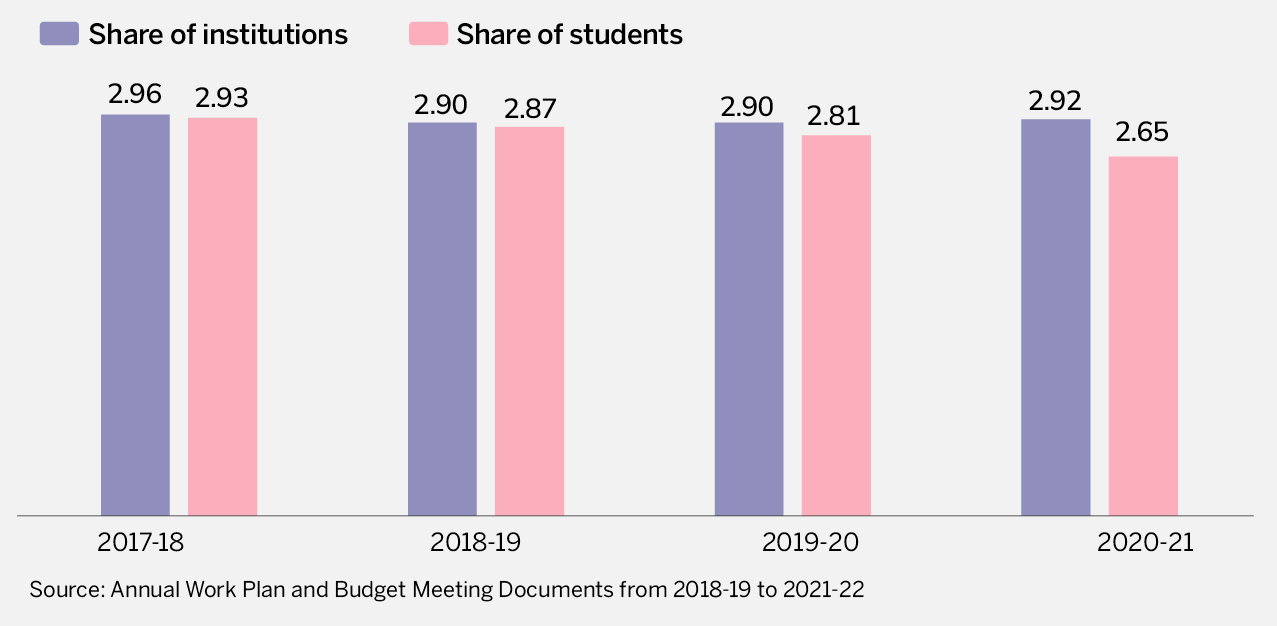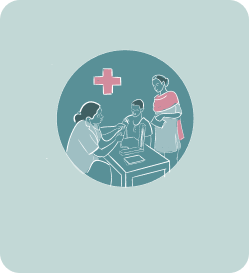01.
Has MDM Helped Increase Enrolment of Students in Latehar?
Section titled Has MDM Helped Increase Enrolment of Students in Latehar?Figure 1 shows the relationship between enrolment in schools that provide MDM, the number of students approved for MDM by the project approval board, and the number of students who actually availed of the MDM scheme.
- The relationship between the three parameters, as well as individual trends of each of the three parameters, varies over time.
- Enrolments dropped by 10.3% over these four years. The decline is more at the primary level (12%) compared to the upper primary level (7%).
- The number of students approved increased by 14.6%, while the number of students availing the meal declined by 5.9%.
- Over these four years combined, 67% of enrolment was approved for meals, while 91% of those with approval availed of the meal.
Figure 1: MDM coverage in the district

- In terms of the share of approved students availing of the meal, both the district and the state show the same trend over these four years.
- In terms of scale, there is inconsistency. Out of these four years, the scale is almost the same for the district and state for two years. In one year, the share of the state is higher, while in another, the share is higher for the district.
Figure 2: Number of students availing meals as a percentage of approvals


